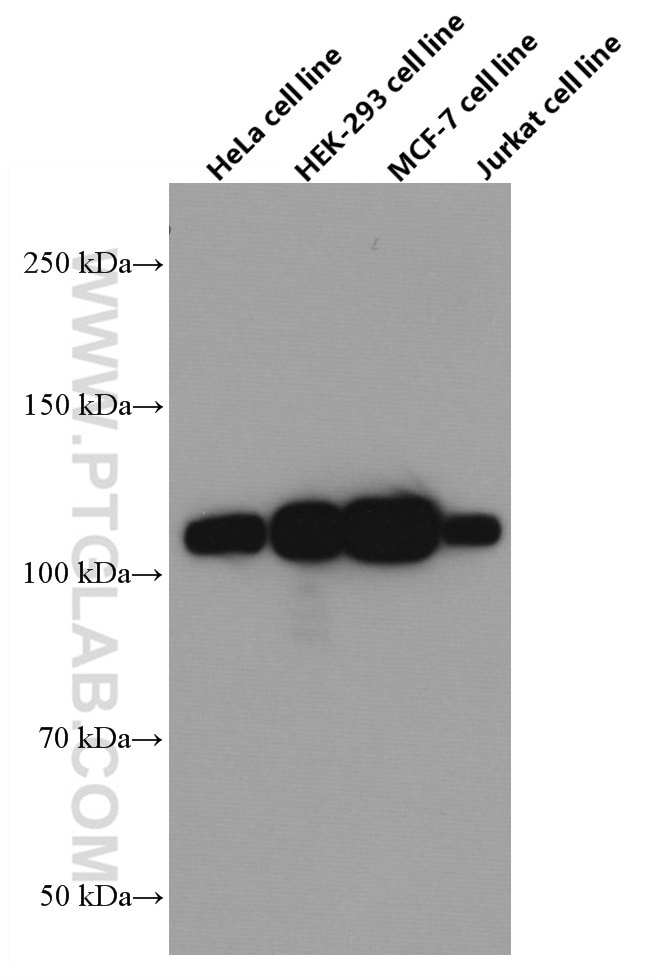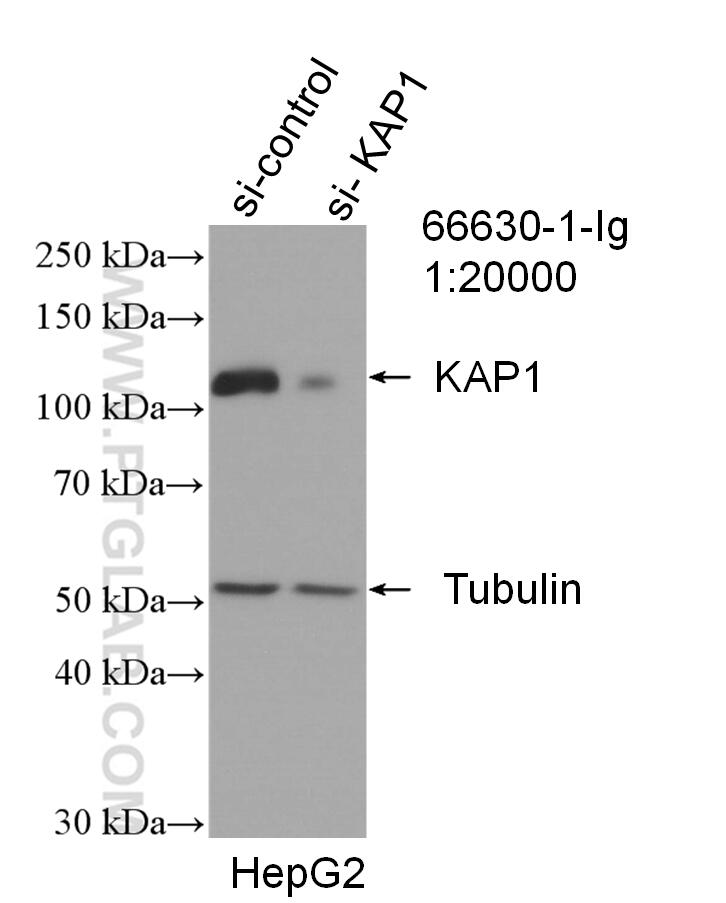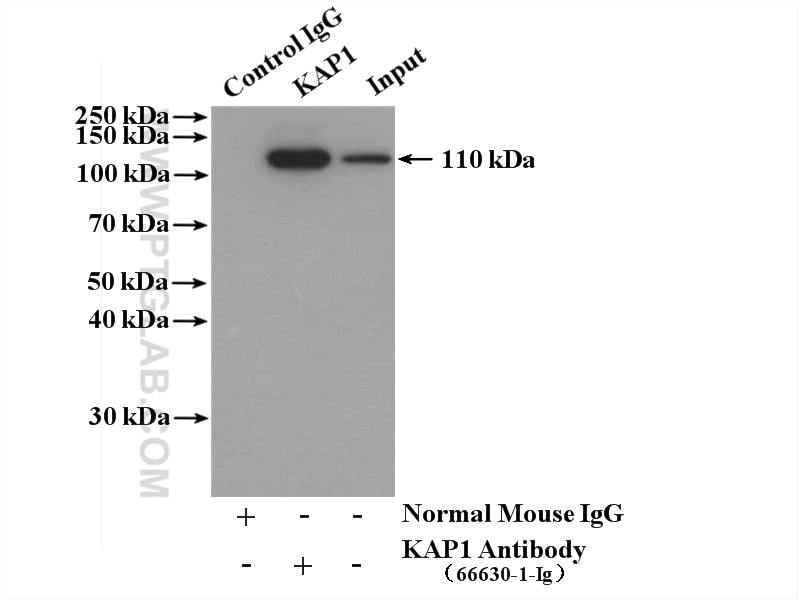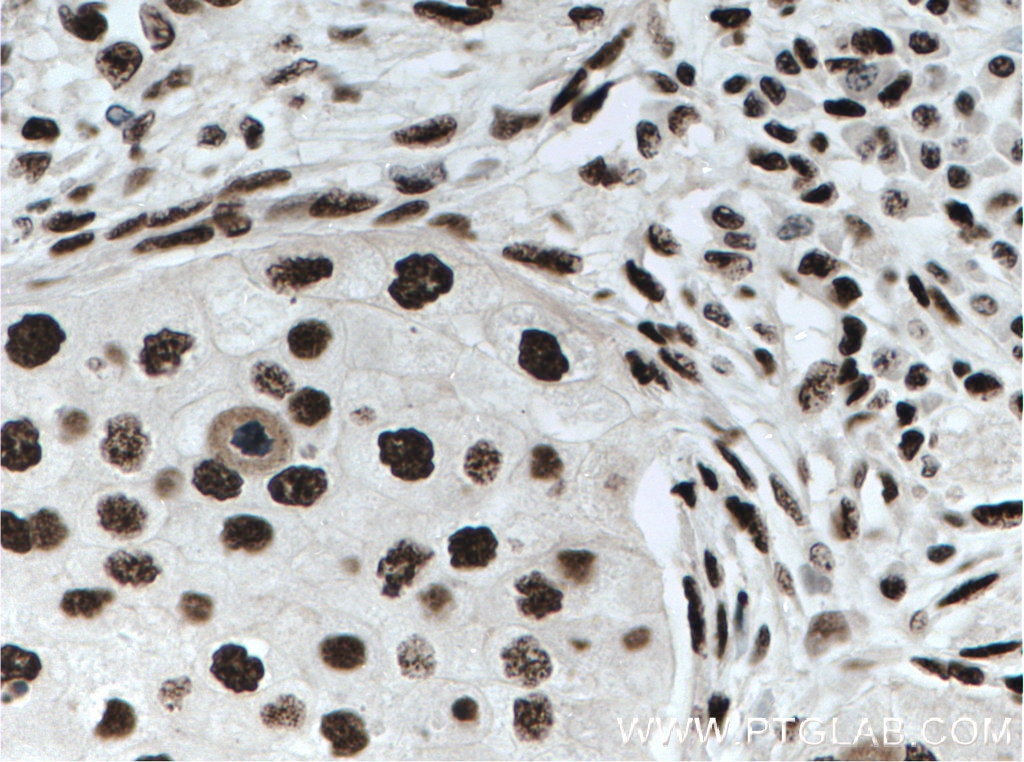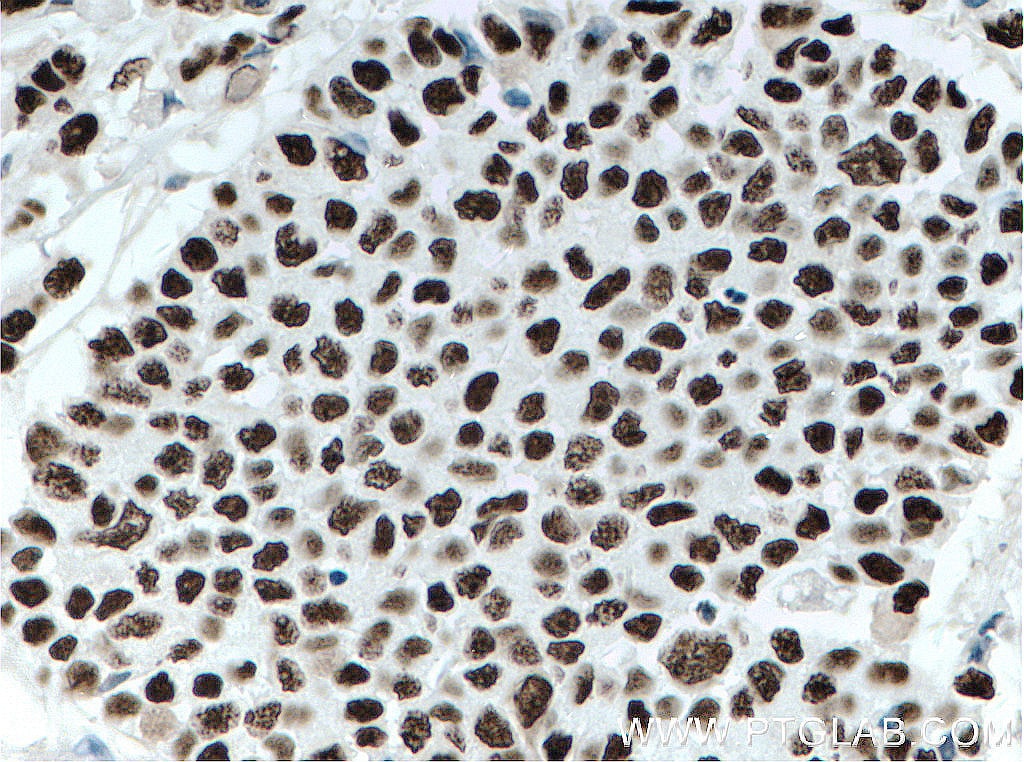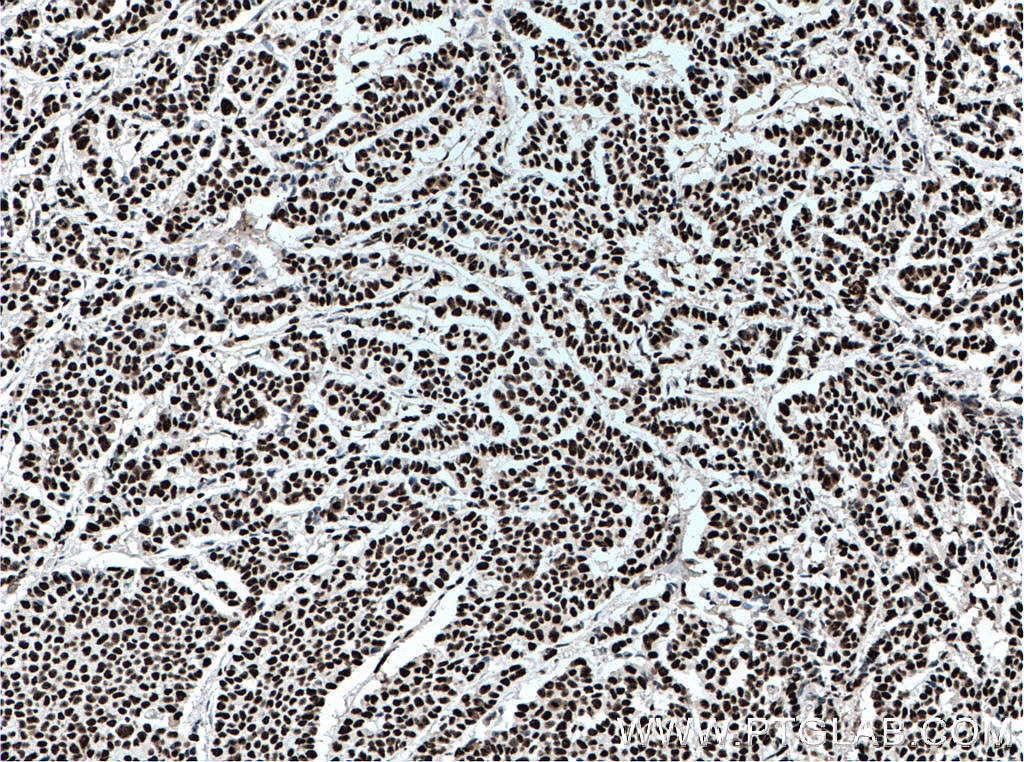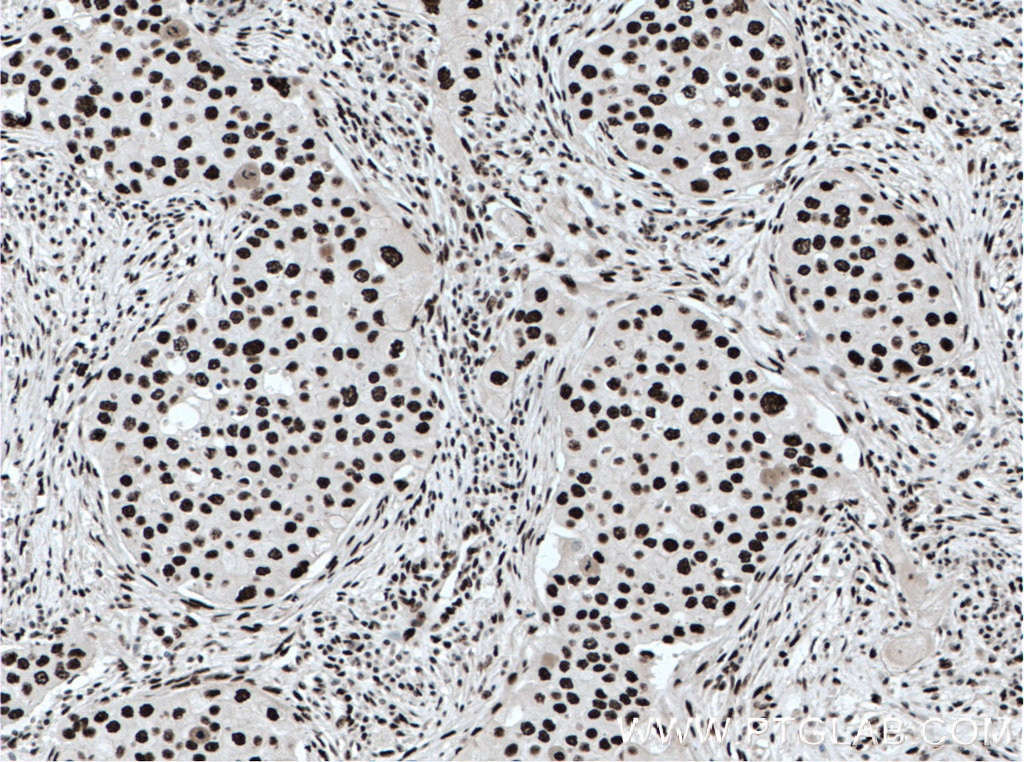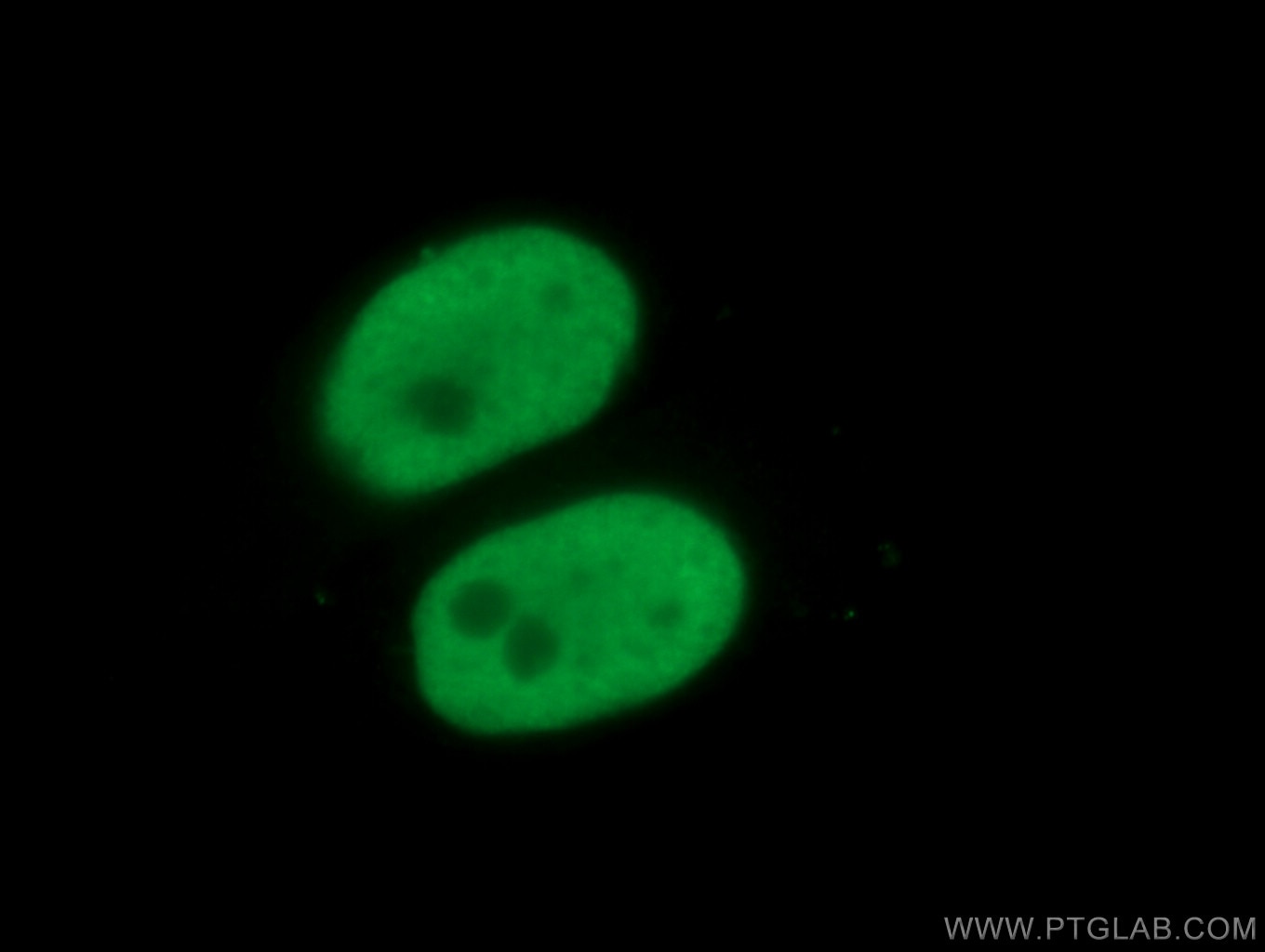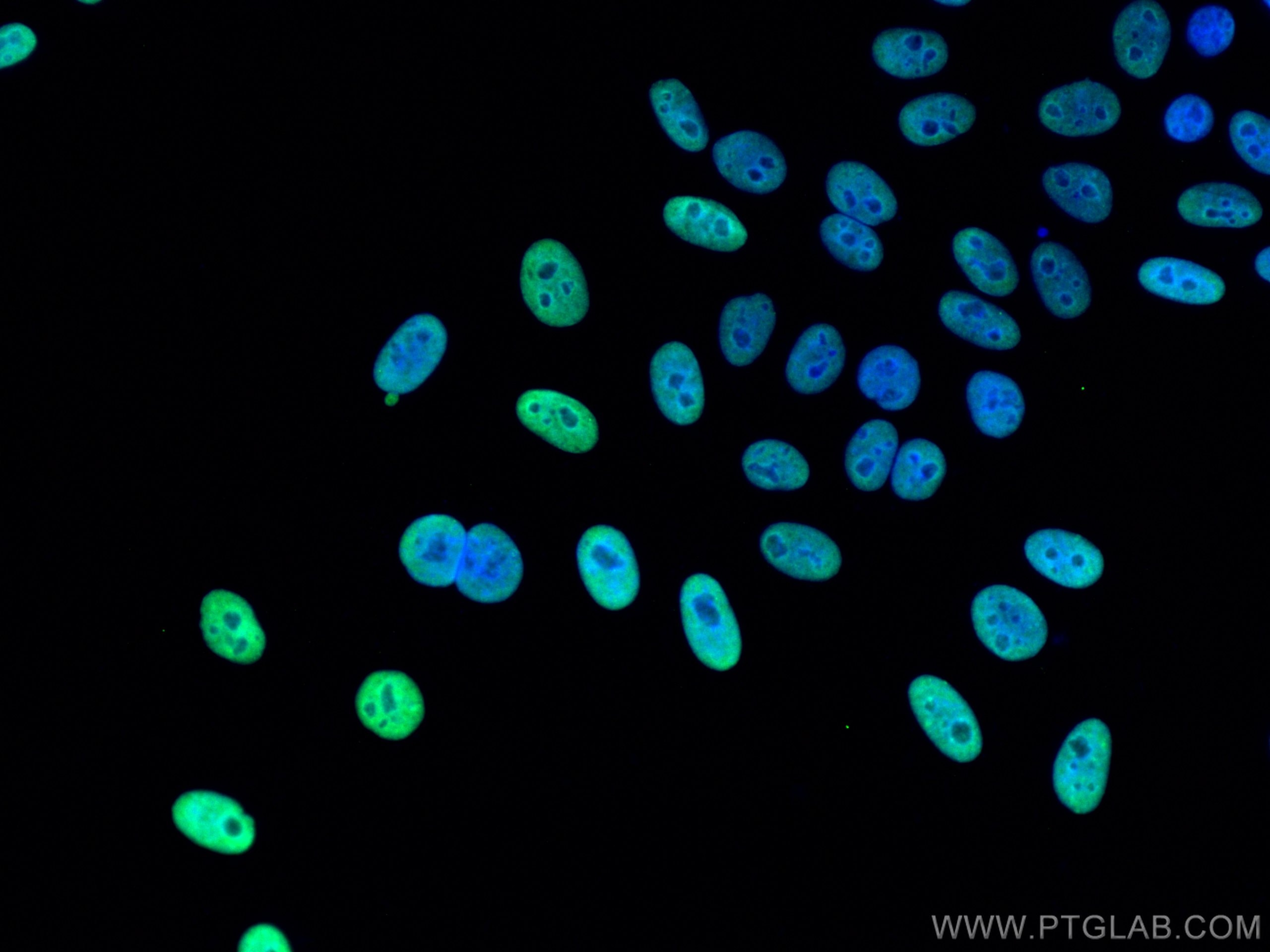- Phare
- Validé par KD/KO
Anticorps Monoclonal anti-KAP1
KAP1 Monoclonal Antibody for IF, IHC, IP, WB, ELISA
Hôte / Isotype
Mouse / IgG2a
Réactivité testée
Humain et plus (1)
Applications
WB, IP, IHC, IF, ChIP, ELISA
Conjugaison
Non conjugué
CloneNo.
1B9G12
N° de cat : 66630-1-Ig
Synonymes
Galerie de données de validation
Applications testées
| Résultats positifs en WB | cellules HeLa, cellules HepG2 |
| Résultats positifs en IP | cellules HeLa, |
| Résultats positifs en IHC | tissu de cancer du sein humain, tissu de cancer du côlon humain il est suggéré de démasquer l'antigène avec un tampon de TE buffer pH 9.0; (*) À défaut, 'le démasquage de l'antigène peut être 'effectué avec un tampon citrate pH 6,0. |
| Résultats positifs en IF | cellules HepG2, |
Dilution recommandée
| Application | Dilution |
|---|---|
| Western Blot (WB) | WB : 1:20000-1:100000 |
| Immunoprécipitation (IP) | IP : 0.5-4.0 ug for 1.0-3.0 mg of total protein lysate |
| Immunohistochimie (IHC) | IHC : 1:200-1:800 |
| Immunofluorescence (IF) | IF : 1:50-1:500 |
| It is recommended that this reagent should be titrated in each testing system to obtain optimal results. | |
| Sample-dependent, check data in validation data gallery | |
Applications publiées
| KD/KO | See 1 publications below |
| WB | See 8 publications below |
| IF | See 1 publications below |
| ChIP | See 1 publications below |
Informations sur le produit
66630-1-Ig cible KAP1 dans les applications de WB, IP, IHC, IF, ChIP, ELISA et montre une réactivité avec des échantillons Humain
| Réactivité | Humain |
| Réactivité citée | Humain, souris |
| Hôte / Isotype | Mouse / IgG2a |
| Clonalité | Monoclonal |
| Type | Anticorps |
| Immunogène | KAP1 Protéine recombinante Ag7519 |
| Nom complet | tripartite motif-containing 28 |
| Masse moléculaire calculée | 89 kDa |
| Poids moléculaire observé | 100 kDa |
| Numéro d’acquisition GenBank | BC004978 |
| Symbole du gène | TRIM28 |
| Identification du gène (NCBI) | 10155 |
| Conjugaison | Non conjugué |
| Forme | Liquide |
| Méthode de purification | Purification par protéine A |
| Tampon de stockage | PBS avec azoture de sodium à 0,02 % et glycérol à 50 % pH 7,3 |
| Conditions de stockage | Stocker à -20°C. Stable pendant un an après l'expédition. L'aliquotage n'est pas nécessaire pour le stockage à -20oC Les 20ul contiennent 0,1% de BSA. |
Informations générales
KAP1, also named as TRIM28 or RNF96, is a 835 amino acid protein, which contain one RING-type zinc finger, one PHD-type zinc finger, one bromo domain and two B box-type zinc fingers. KAP1 localizes in the nucleus and Belongs to the TRIM/RBCC family. KAP1 is a nuclear corepressor for KRAB domain-containing zinc finger proteins and mediates gene silencing by recruiting CHD3, a subunit of the nucleosome remodeling and deacetylation (NuRD) complex, and SETDB1 to the promoter regions of KRAB target genes. KAP1 is expressed in all tissues tested including spleen, thymus, prostate, testis, ovary, small intestine, colon and peripheral blood leukocytes. The calcualted molecular weight of KAP1 is 89 kDa, but modified KAP1 is about 100 kDa. (PMID: 18590578 )
Protocole
| Product Specific Protocols | |
|---|---|
| WB protocol for KAP1 antibody 66630-1-Ig | Download protocol |
| IHC protocol for KAP1 antibody 66630-1-Ig | Download protocol |
| IF protocol for KAP1 antibody 66630-1-Ig | Download protocol |
| IP protocol for KAP1 antibody 66630-1-Ig | Download protocol |
| Standard Protocols | |
|---|---|
| Click here to view our Standard Protocols |
Publications
| Species | Application | Title |
|---|---|---|
Sci Adv Epac1 activation by cAMP regulates cellular SUMOylation and promotes the formation of biomolecular condensates. | ||
Nucleic Acids Res SIRT6 coordinates with CHD4 to promote chromatin relaxation and DNA repair. | ||
BMC Pulm Med miR-125b-5p upregulation by TRIM28 induces cisplatin resistance in non-small cell lung cancer through CREB1 inhibition
| ||
Oncogene ZNF133 is a potent suppressor in breast carcinogenesis through dampening L1CAM, a driver for tumor progression |
